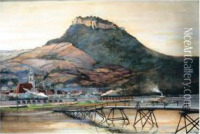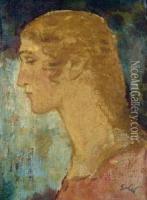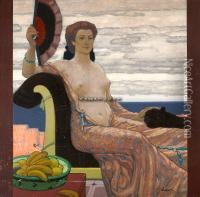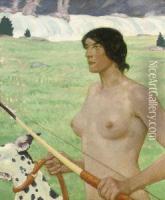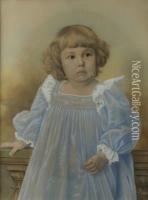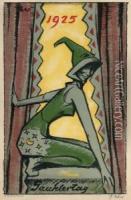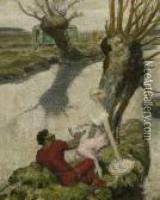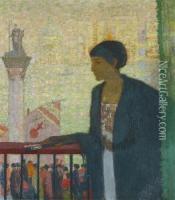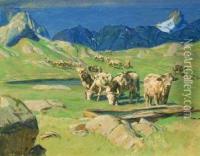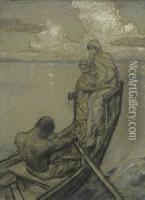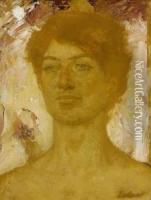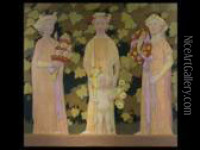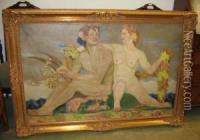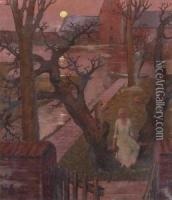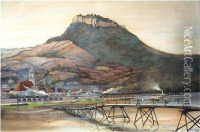Fritz Erler Paintings
Fritz Erler was a German painter, graphic artist, and designer born on December 15, 1868, in Frankenstein, Silesia (now Ząbkowice Śląskie, Poland). He is often associated with the Jugendstil movement, the German counterpart of Art Nouveau, which was prevalent at the turn of the 20th century. Erler studied at the Academy of Fine Arts in Munich, where he was influenced by his contemporaries in the Symbolist and Jugendstil movements.
Erler's career spanned various disciplines, including painting, poster design, and stage design. He was particularly known for his powerful poster art, which combined bold graphics with a unique stylistic approach. His posters often included elements of national pride and were characterized by strong lines and a vibrant use of color.
During World War I, Erler produced several propaganda posters for the German government. These works were instrumental in rallying public support for the war effort. His patriotic themes and emotive portrayal of soldiers and national symbols were highly effective in their psychological impact.
In addition to his graphic work, Fritz Erler was also a successful portraitist and muralist. He painted portraits of many notable figures of his time and received commissions for murals in public buildings, including theaters and government structures. His murals often depicted allegorical and historical scenes designed to evoke a sense of grandeur and cultural identity.
Erler's work as a stage designer further showcased his versatility. He created set designs for various theaters, bringing his artistic vision to the performing arts. His designs were known for their attention to detail and ability to enhance the dramatic atmosphere of the productions.
Despite the prominence of his work during his lifetime, Fritz Erler's legacy is somewhat overshadowed by other artists of the Jugendstil movement. Nonetheless, his contributions to German art, particularly in the fields of poster design and mural painting, remain significant. Erler passed away on February 11, 1940, in Munich, Germany, leaving behind a diverse body of work that reflects the turbulent times and artistic innovations of the late 19th and early 20th centuries.
